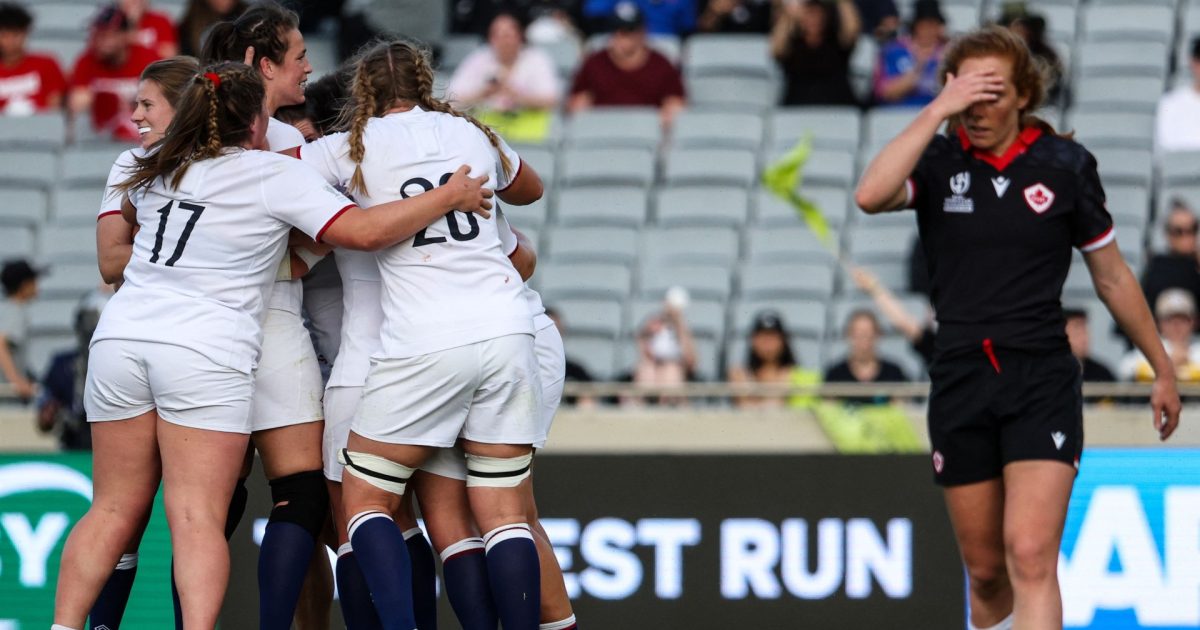'There is a waking up to women's rugby, a falling in love with it'

Rugby World Cup 2025 hosts England have a pivotal role to play in the sport’s next phase of development, according to World Rugby’s chief of the women’s game. Sally Horrox joined the organisation as director of women’s rugby in May and will be among what is expected to be a record crowd of over 40,000 on Saturday watching holders New Zealand take on England in this year’s World Cup title clash, with kick-off at 6:30 AM in the UK.
While Red Roses captain Sarah Hunter admitted “nothing is being thought of beyond Saturday” in camp, Horrox is already looking well down the road to England’s turn at welcoming the world in three years’ time. “It feels like there’s something really special happening here in New Zealand at the moment,” she told the PA news agency.
“There is a waking up to women’s rugby, there is a falling in love with it. The personalities are connecting, it’s broadening the audience. That energy and excitement are translating to this. I know it’s cliche, but I do believe it’s a springboard, it will be a catalyst for this next period of growth as we kick out of the back end of this World Cup.
“Tournaments are fantastic, but it’s really important that we keep the momentum going out to the other side of the competition and drive on through to England in 2025. It’s about more than the sport on the pitch. It’s what we do next.”
One of the primary criticisms levelled against the women’s game is that it is dominated by a handful of countries, England chief among them. The Red Roses are one of the only fully professional teams, a status also reflected in their number-one world ranking.
Should they win the World Cup, Simon Middleton’s England, who have not lost since 2019, would extend their unbeaten Test run to 31 games. Their 25th victory in August set a new all-time record across both the men’s and women’s competitions but rather than being discouraged about the finalists’ dominance, Horrox views the Red Roses – and England – as exemplars for what she hopes will eventually happen elsewhere.
She said: “It’s always brilliant to have a leader. Best practice is something to aspire to in any area of business or sport. Absolutely we want our leading nations to be breaking records, to be breaking barriers, to lead us, for us to have something to aspire to and learn from. What we want is to share that knowledge, and for others, all boats rise together.”
In 2019, England became the first women’s team to fully professionalize. Meanwhile, the top-flight Allianz Premier 15s, where all of the current Red Roses play, continues to set the standard for domestic competition. In June, the RFU announced plans to invest £220million into the women’s game over the next ten years, with the Prem 15s on target to “become the first professional women’s club rugby league across all aspects of the game”.
The latest phase of tendering is underway for clubs wishing to be part of the next top-flight cycle. They will undergo rigorous scrutiny to ensure they can meet increased substantial investment standards including improvements to coaching staff, marketing and matchday presentation from the 2023/24 season.
England’s success has also been the result of an enviably full calendar of international Tests, which included clinching a record 18th Six Nations title this year. Horrox is confident the launch of a new global competition next October, the 16-team, three-tier WXV, will further showcase the world’s top talent and be a key part of the 2025 World Cup qualification process while also giving developing sides critical playing time against well-matched opposition.
Detailed plans and hosts for the competition, supported by an initial £6.4m World Rugby investment, will be announced, Horrox said, “in the next few weeks, so that everyone gets that clear runway. That will provide every union with six high-standard Test matches. It’s probably one of our single biggest areas of investment for the next two years.”
































